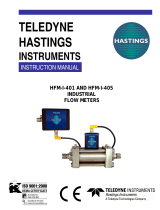
iv
CAUTION
Before mounting, removing, or wiring this device, be sure to turn off the power to this device
and connected devices. Otherwise, there is a danger of electric shock.
Wire the device properly by following established standards and using the specified supply
power and installation methods.
This device is intended for use in an industrial electromagnetic environment. When using this
device in a residential environment, appropriate measures must be taken because this device
can cause interference.
During EMC testing, the reading or output may fluctuate. Please refer to “Standards
compliance” in Chapter 8, “Specifications.”
If you wish to use this device for a nonstandard gas, be sure to consult with us in advance.
Otherwise, there is a danger of device failure.
Do not connect a connector or supply power to this device if the connector of this device is
dusty or dirty. There is a danger of smoke or device failure.
If an external shutoff valve is closed, close this device’s valve also.
Otherwise, there is a danger of device failure.
When carrying this device, hold the bottom. Otherwise, injury or device failure may result.
Do not connect equipment that causes a large amount of throttling or pressure loss near
this device. Hunting may occur and the specified accuracy may not be satisfied. Continuous
hunting may cause valve failure. In order to reduce the pressure loss, use pipes, fittings, and
other pipe connection equipment whose narrowest part has the inner diameter shown below
or whose flow path has the cross-sectional area shown below.
Model F4Q9200, F4Q9500, F4Q0002: 4 mm or more
Model F4Q0005, F4Q0020, F4Q0050(B,C), F4Q0100: 7 mm or more
Model F4Q0050(J,K), F4Q0200: 10 mm or more
Only the following gases can be used with EPDM gasket specifications. If this device is used
for a gas that is not allowed, deterioration of the seal may result.
- Compatible gases: air, nitrogen, argon, carbon dioxide, ammonia, and acetylene
Newton’s rings may appear on the display due to the protective parts of the display unit.
There is no problem with the performance of the display unit.
When the valve of this device starts to open from the fully closed position, overshoot may
occur. Check how this device operates with the actual equipment before use.
The valve of model F4Q0050(J,K)/0200 is located on the outside. Do not touch the valve while
this device is in operation. Because it is hot, there is a risk of burns.
To release the fluid pressure inside the F4Q, vent the gas from the outlet port. Releasing
the fluid pressure from the inlet port may affect the rectifying section and cause errors in
measurement and control.























